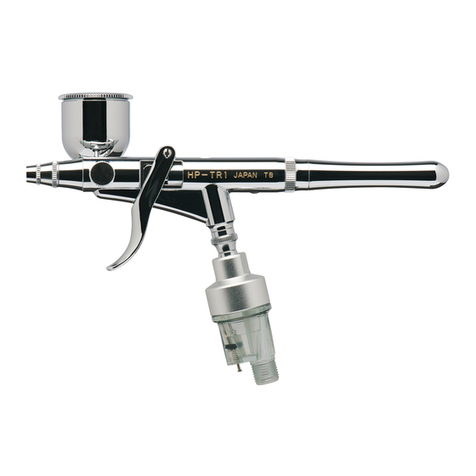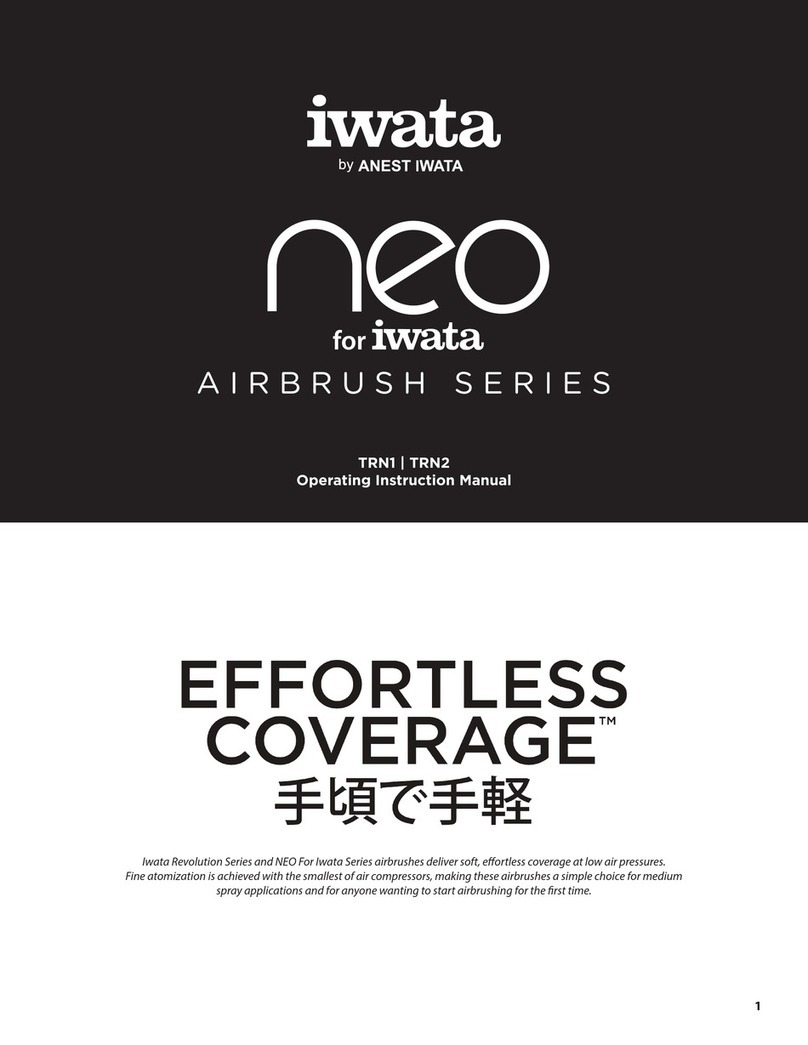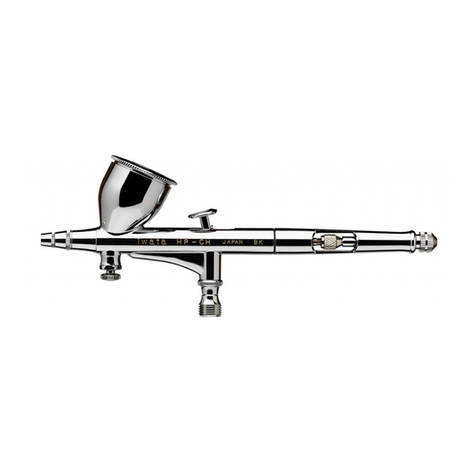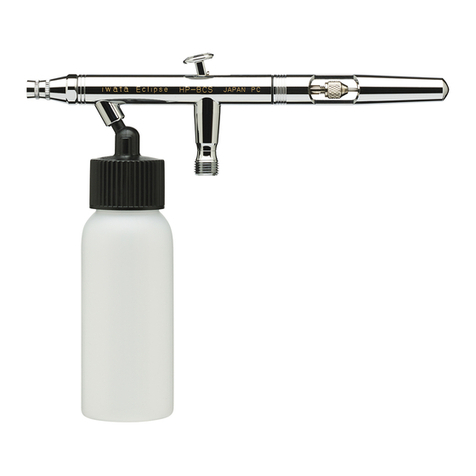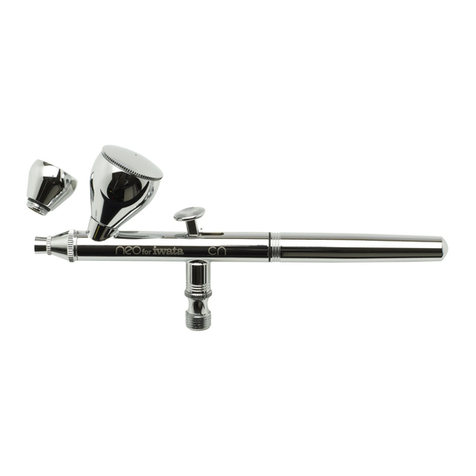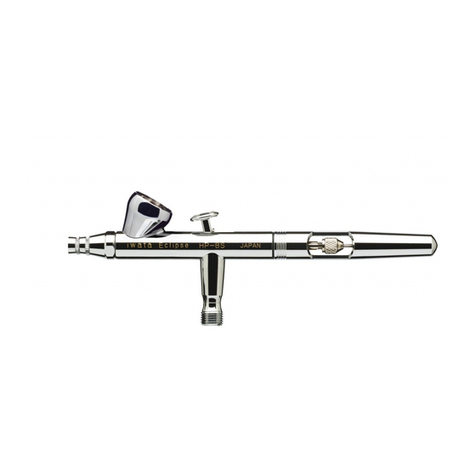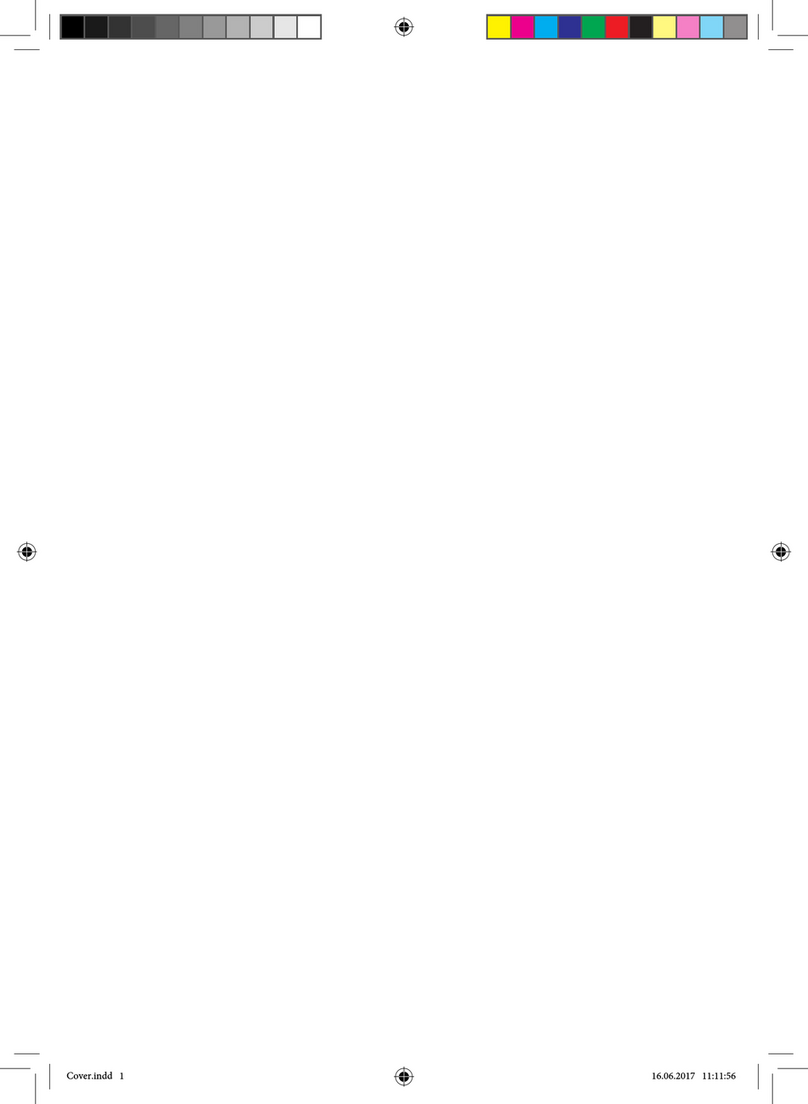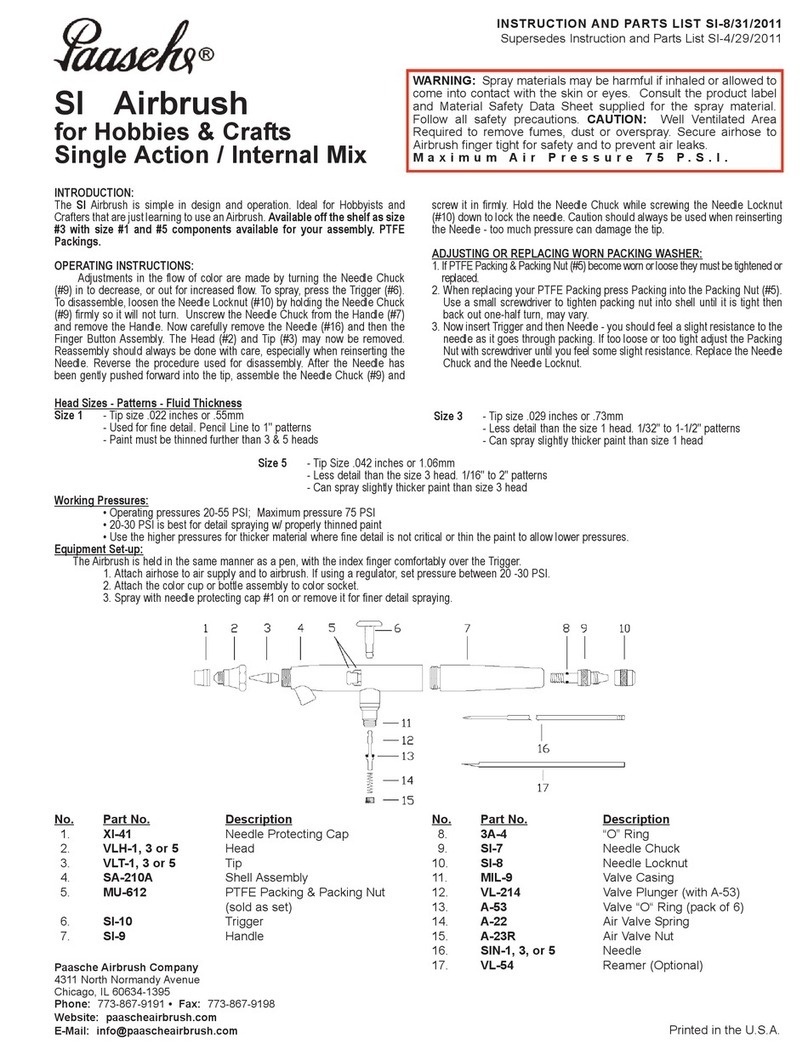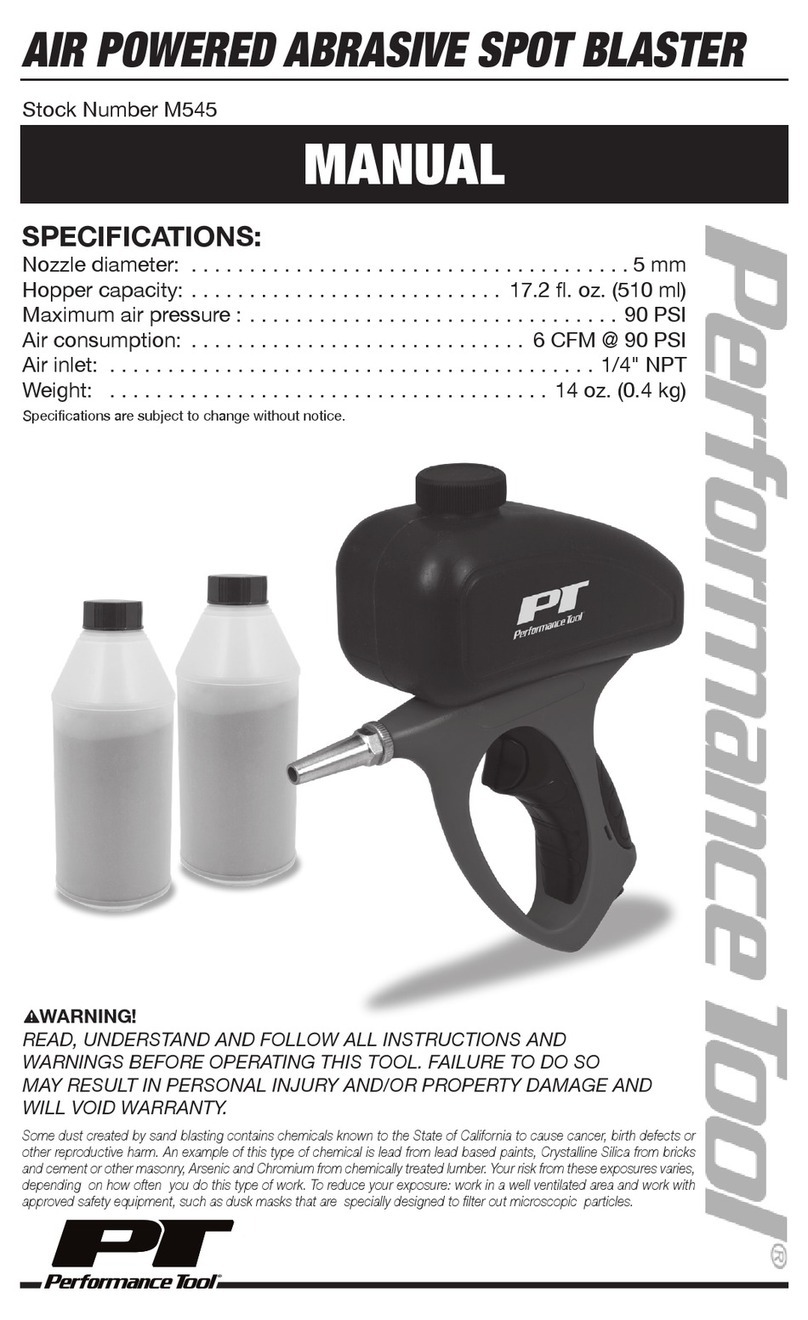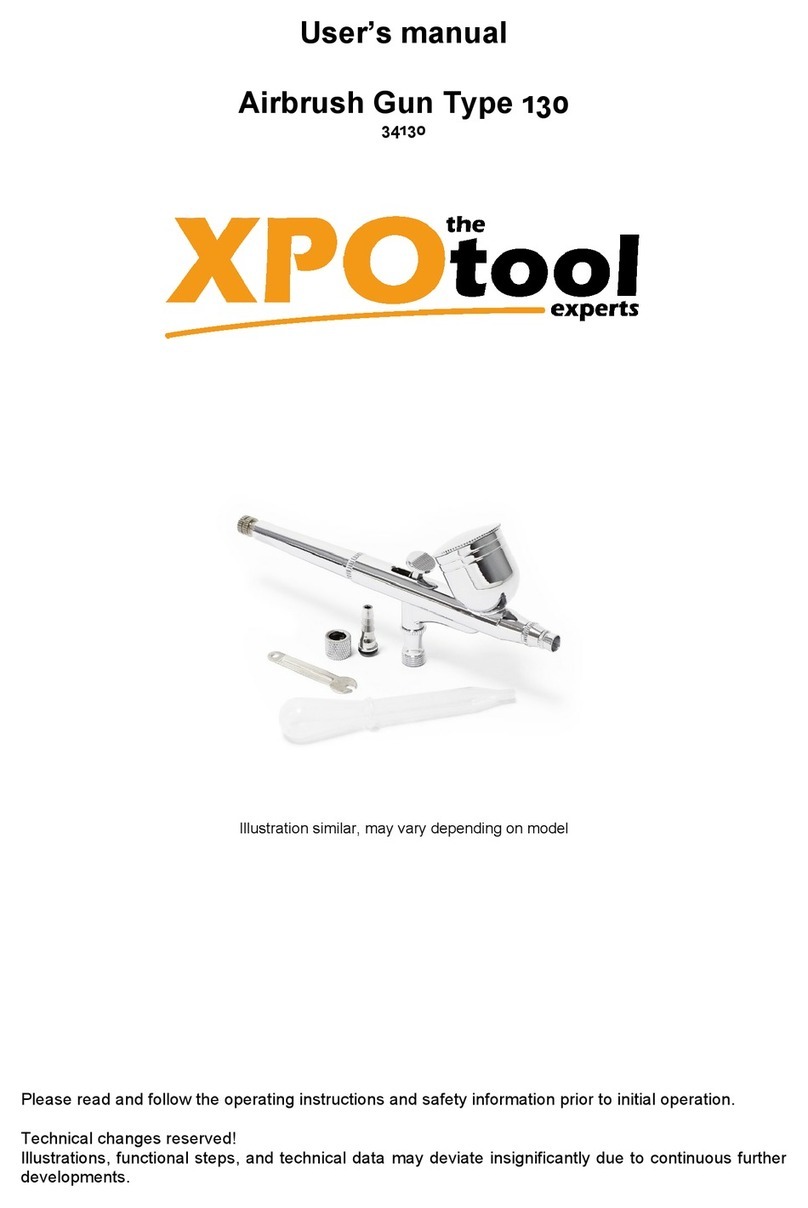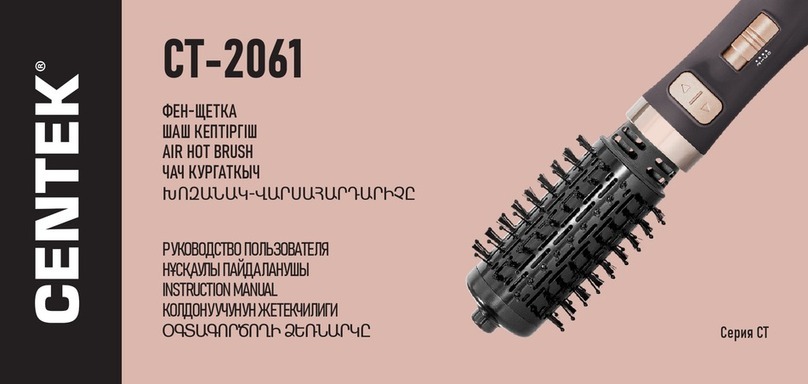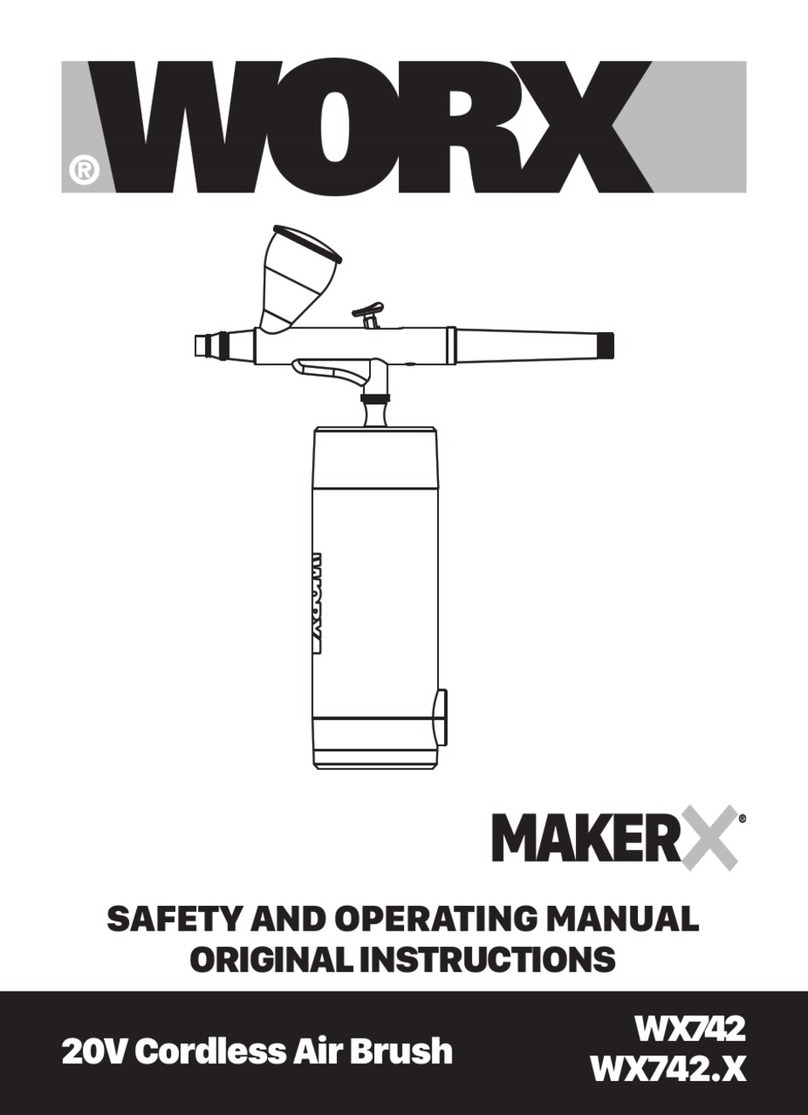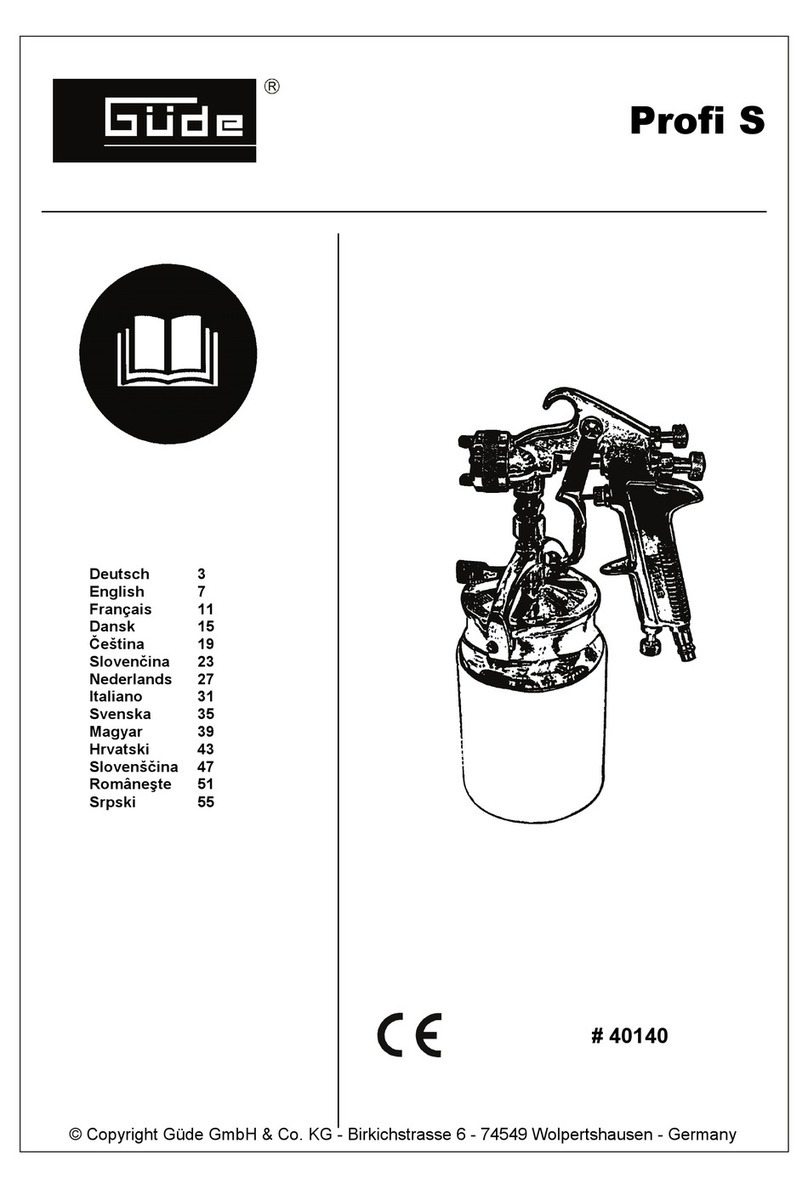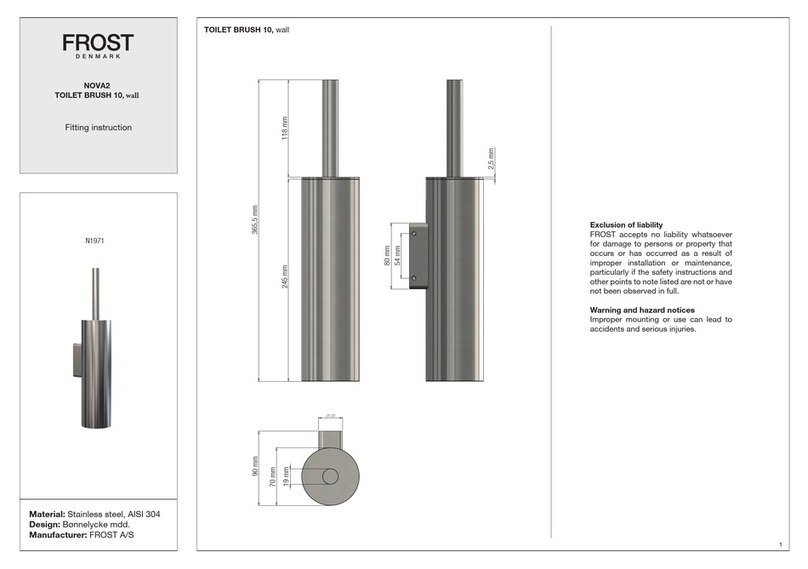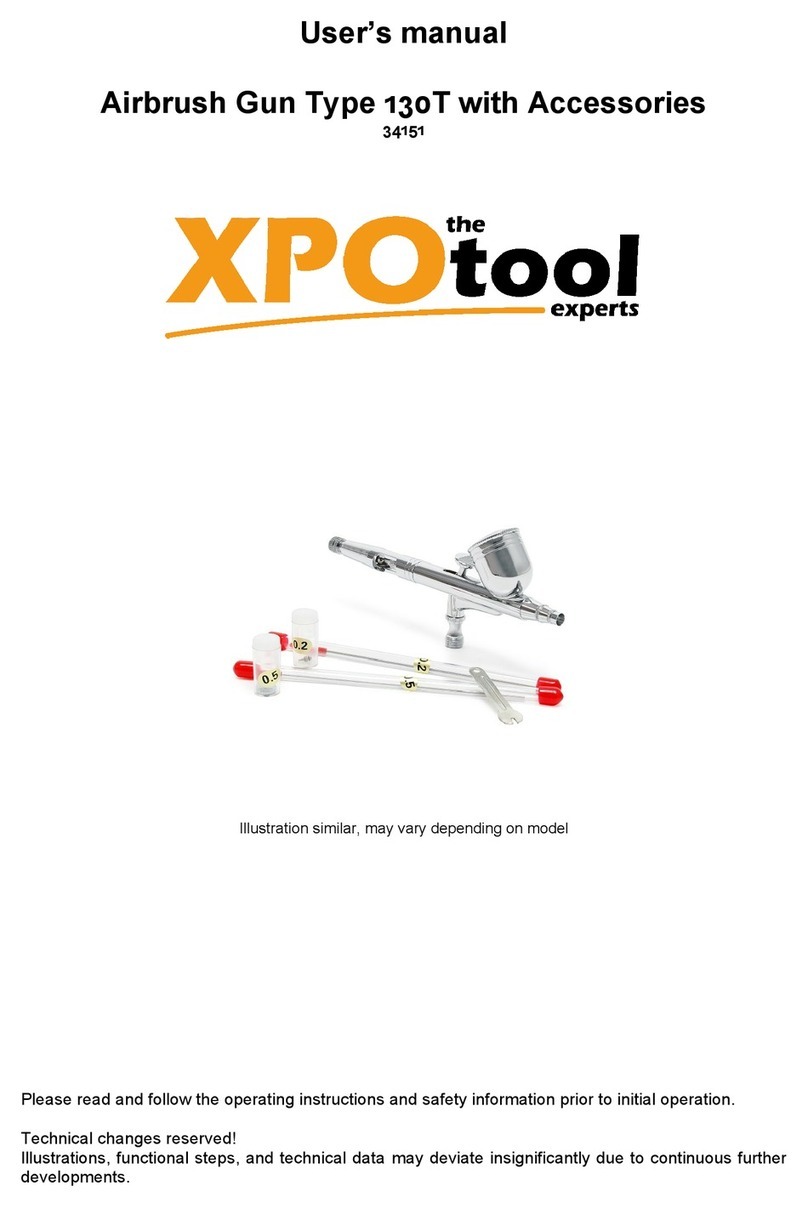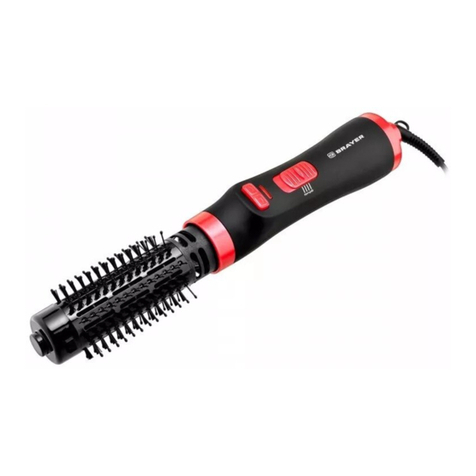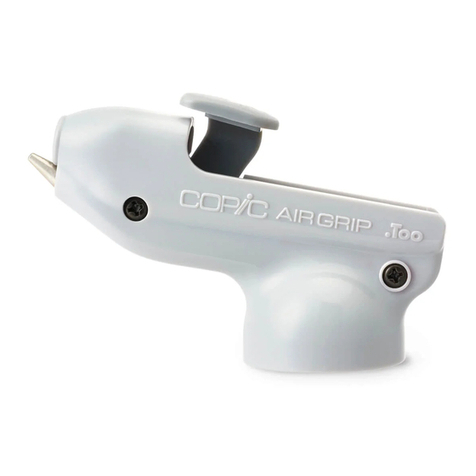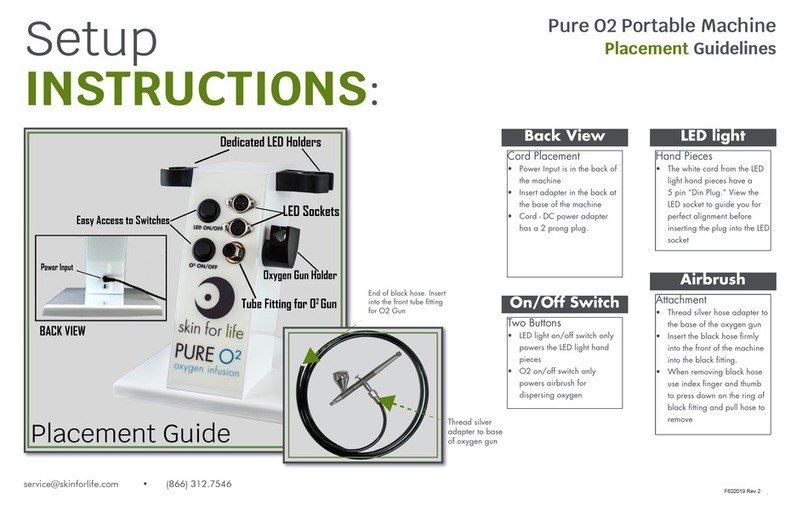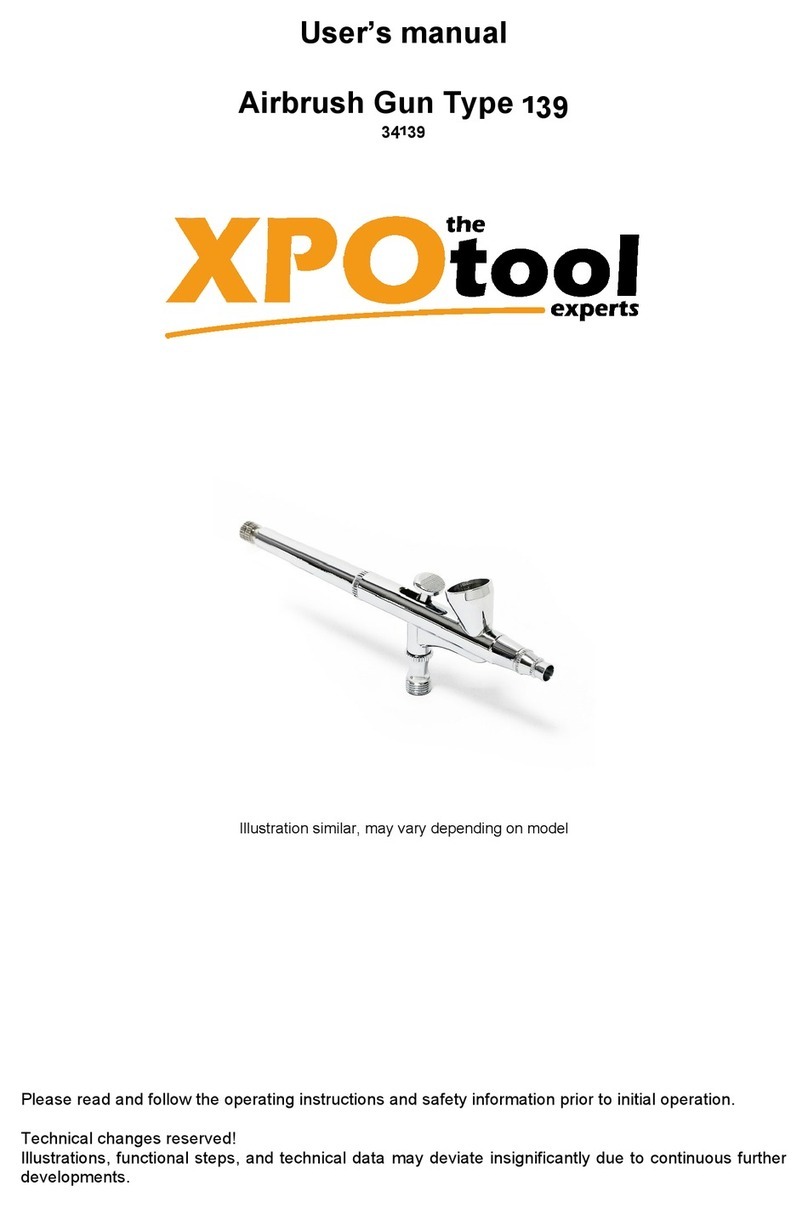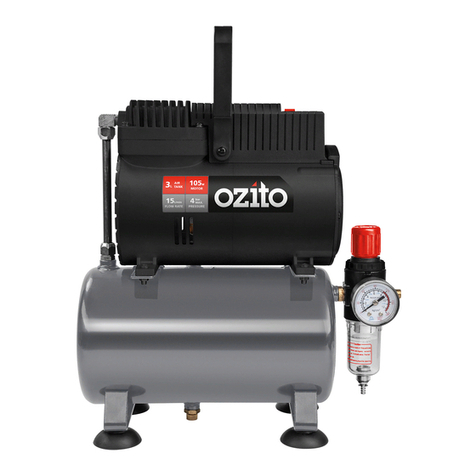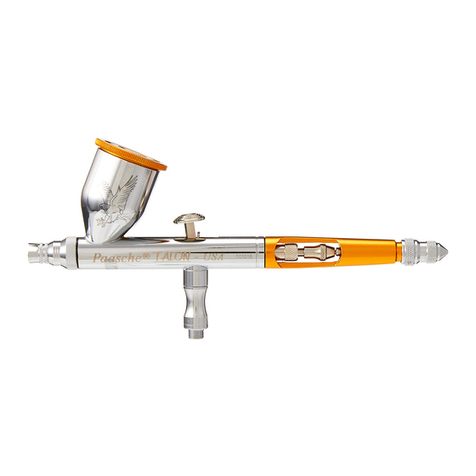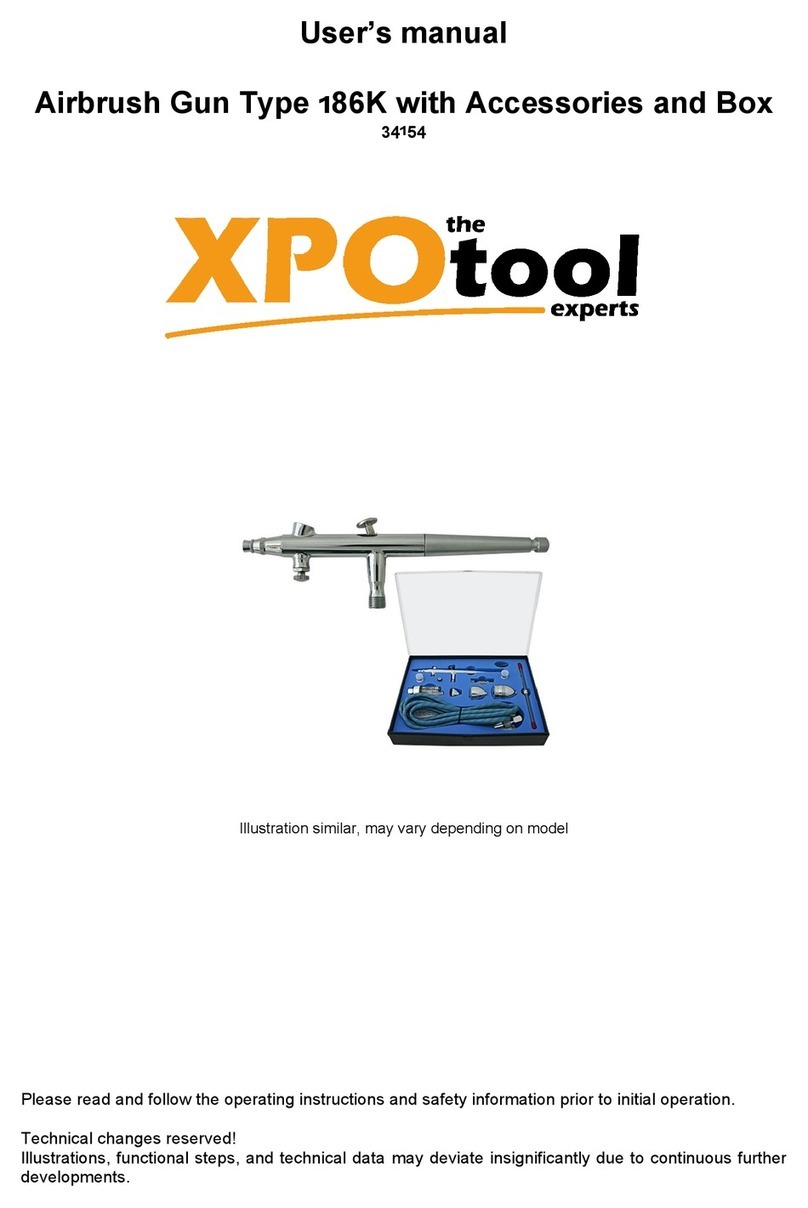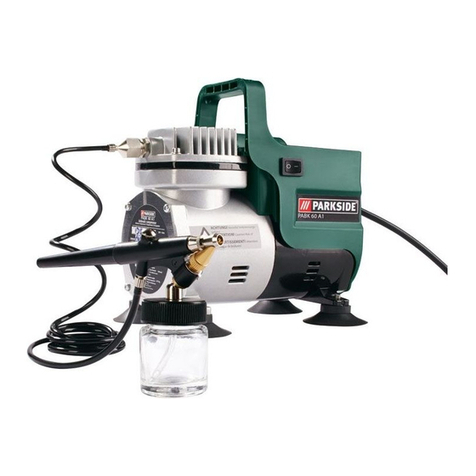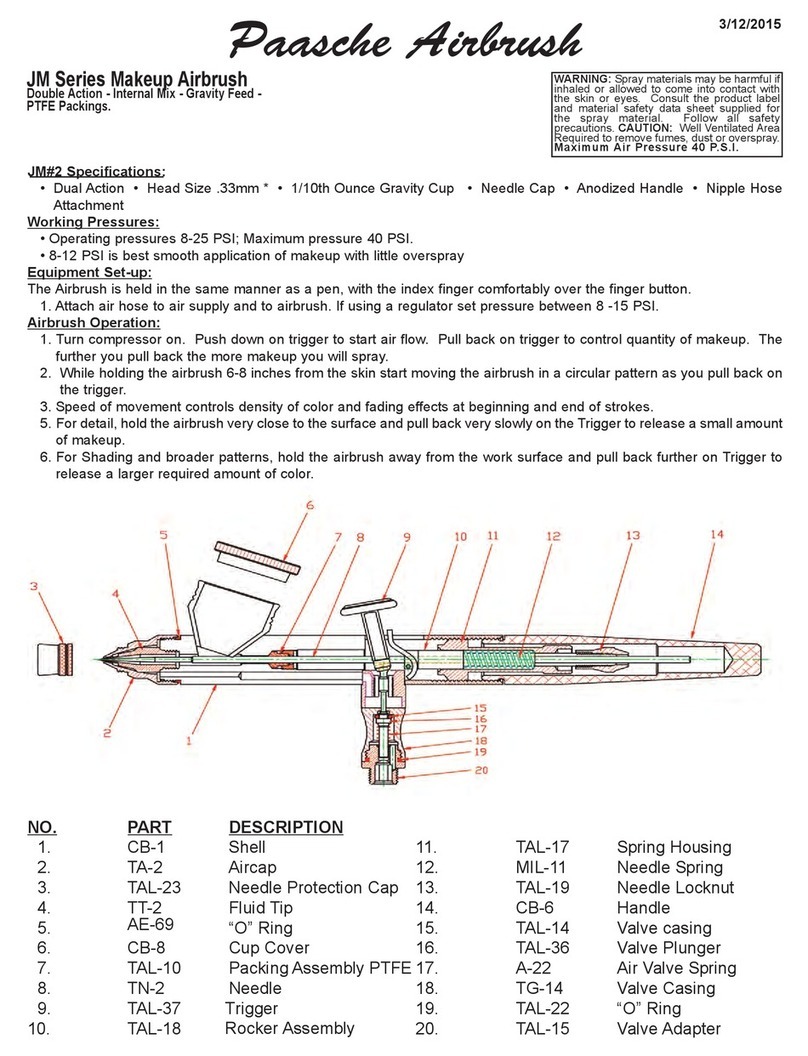
4
Cleaning the Airbrush Between Colors
(A+, B+, C+, SB+ Only)
1. Dump out the color cup’s excess paint.
2. Rinse the cup with the appropriate cleaning solution.
3. Use a paper towel to wipe out any left over paint.
4. Fill the bottom of the cup with cleaner.
5. Spray cleaner until the spray is clear.
6. Add the next color to the color cup.
7. Repeat cleaning procedure when nished.
Cleaning the Airbrush Between Colors
(BC+ Only)
1. Remove the paint bottle.
2. Attach a bottle containing the appropriate cleaning solution.
3. Spray until the solution sprays clear.
4. Remove the bottle of cleaning solution.
5. Spray air until the airbrush sprays dry.
6. Attach a bottle containing the next color.
7. Repeat cleaning procedure when nished.
Cleaning the Needle (#4)
1. Unscrew the handle (#17) from the airbrush body.
2. Loosen the needle chucking nut (#16).
3. Gently pull the needle (#4) straight out.
4. Fold a soft cloth damp with cleaner over the needle.
5. Rotate the needle to gently wipe the residual paint o.
6. Carefully insert the needle into the airbrush until it seats fully against the nozzle
(#3). You should feel a positive stop. If you feel a spongey stop, you still have debris
in your nozzle.
CAUTION: The most probable time to damage the needle is when the
needlepasses throughthe mainlever(#7) and throughtheneedle packing
screw (#5).
If the needle stops abruptly, retract and examine the trigger mechanism
for proper assembly and re-insert the needle.
7. Tighten the needle chucking nut nger tight.
• Pull the main lever back and forth to visually conrm the needle’s ability to move.
8. Screw the handle back onto the airbrush body.
Before Each Session
Spray water or the appropriate paint solvent through the airbrush to make sure the
airbrush is working properly.
After Each Session
Or any time the airbrush becomes clogged.
1. Increase the air pressure.
2. Spray cleaning solution for a short time.
3. Clean the needle if necessary
This cleaning method helps clean the paint passage, the nozzle, and the
needle thoroughly.
Lubricating the Needle (#4)
To ensure smooth main lever (#7) action lubricate the needle when the trigger won’t
respond properly.
1. Unscrew the handle (#17).
2. Loosen the needle chucking nut (#16).
3. Remove the needle.
4. Coat the needle slightly with Medea Super Lube starting 1 inch behind the tip.
5.Wipe the needle with a soft, clean cloth, leaving a light coat of lube behind.
6. Re-insert the needle gently into the airbrush until you feel a positive stop.
7.Tighten the needle chucking nut.
8. Screw the handle onto the airbrush body.
DONOTover-lubetheneedle;transferringexcesslubeintothenozzlemay
cause severe paint ow problems.
DONOTuse lightmachine oilor WD-40for lubrication.These lubescause
the needle to stick when it moves through the needle
packing o-ring and can also get into the air system.
CAUTION: If it becomes absolutely necessary to dismantle the airbrush
remember that most situations do not require tools.
DO NOT use pliers.
Lubricating the Air Piston (#12)
(A+, B+, C+, SB+ Only)
To ensure smooth main lever (#7) action lubricate the air piston when the trigger
won’t respond properly.
1. Unscrew the handle (#17).
2. Unscrew the needle chucking nut (#16).
3. Remove the needle (#4).
4. Unscrew the spring guide (#11).
5. Remove the needle spring (#10).
6. Remove the needle chucking guide (#9).
7. Pull the main lever up and out.
8. Use tweezers to pull out the air valve piston.
9. Clean the air piston with a cotton swab.
10. Clean the hole at the bottom of the trigger housing with a cotton swab.
a. Clean until a Cotton Swab comes back clean.
11. Dab a very small drop of Super Lube on the air piston shaft.
12. Insert the air piston back into the hole at the bottom of the trigger housing.
13. Place the main lever back into the trigger housing.
14. Press the main lever up and down a few times.
a. It should spring back up smoothly when depressed.
15. Place the needle chucking guide into the airbrush body.
a. Check the parts guide for proper orientation.
b. Pull the small tab forward.
c. Angle the needle chucking guide’s tail end slightly up.
d. Insert the needle chucking guide into the airbrush body.
e. The small tab should stick up slightly behind the main lever.
16. Place the needle spring over the needle chucking guide.
17. Screw the spring guide into the airbrush body.
18. Push down on the main lever at least once.
19. Carefully insert the needle. Warning: This is the most probable time to
bend the needle point.
20. Screw the needle chucking nut onto the needle chucking guide.
21. Screw the handle back into the airbrush body.
DO NOT over-lube the air piston; transferring excess lube into the air
system may cause severe paint ow problems.
DONOTuselightmachineoilorWD-40forlubrication.Theselubescause
the needle to stick when it moves through the needle packing o-ring.
CAUTION:If it becomes absolutelynecessary to dismantlethe airbrush
remember that most situations, unless otherwise directed, do not
require tools.
Lubricating the Air Piston (#12)
(BC+ Only)
1. Unscrew the handle (#17).
2. Unscrew the needle chucking nut (#16).
3. Remove the needle (#4).
4. Unscrew the spring guide (#11).
5. Remove the needle spring (#10).
6. Remove the needle chucking guide (#9).
7. Pull the main lever up and out.
8. Clean the air piston, the main lever’s dangly piece with a cotton swab.
9. Clean the hole at the bottom of the trigger housing with a cotton swab.
a. Clean until a cotton swab comes back clean.
10. Dab a very small drop of Super Lube on the air piston shaft.
11. Straighten the air piston and the main lever out.
12. Insert the air piston back into the hole at the bottom of the trigger housing.
13. Place the main lever back into the trigger housing.
14. Press the main lever up and down a few times.
a. It should spring back up smoothly when depressed.
15. Place the needle chucking guide into the airbrush body.
a. Check the parts guide for proper orientation.
b. Pull the small tab forward.
c.Angle the needle chucking guide’s tail end slightly up.
d. Insert the needle chucking guide into the airbrush body.
e.The small tab should stick up slightly behind the main lever.
16. Place the needle spring over the needle chucking guide.
17. Screw the spring guide into the airbrush body.
18. Push down on the main lever at least once.
19. Carefully insert the needle. Warning: This is the most probable time to
bend the needle point.
20. Screw the needle chucking nut onto the needle chucking guide.
21. Screw the handle back into the airbrush body.
DO NOT over-lube the air piston; transferring excess lube into the air
system may cause severe paint ow problems.
DONOTuselightmachineoilorWD-40forlubrication.Theselubescause
the needle to stick when it moves through the needle packing o-ring.
CAUTION: If it becomes absolutely necessary to dismantle the airbrush
remember that most situations, unless otherwise directed, do not
require tools.
MAINTENANCE REFER TO MASTER PARTS LIST ON PAGE 9
NEVER soak your entire airbrush in any liquid.
NEVER store your airbrush with spray medium
or cleaning agents in the uid cup.
